Adam Katona
Quality Evolvability ES: Evolving Individuals With a Distribution of Well Performing and Diverse Offspring
Mar 19, 2021
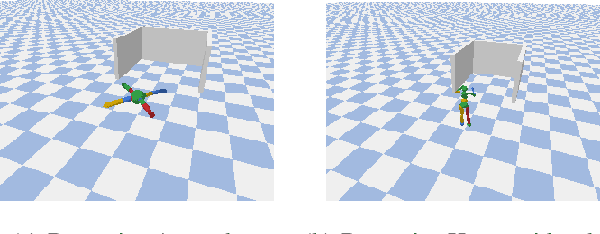
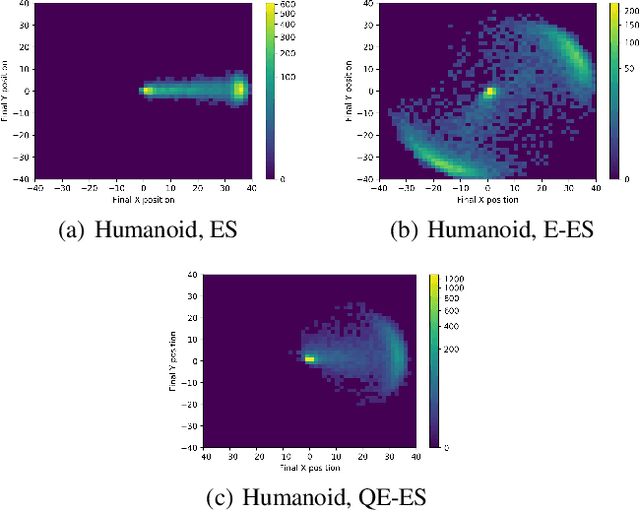
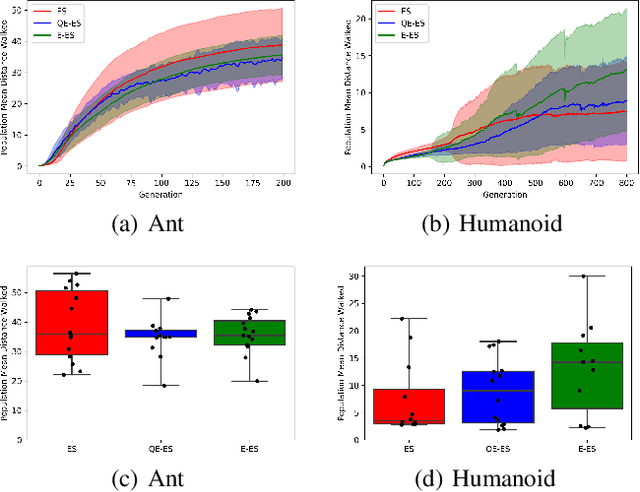
Abstract:One of the most important lessons from the success of deep learning is that learned representations tend to perform much better at any task compared to representations we design by hand. Yet evolution of evolvability algorithms, which aim to automatically learn good genetic representations, have received relatively little attention, perhaps because of the large amount of computational power they require. The recent method Evolvability ES allows direct selection for evolvability with little computation. However, it can only be used to solve problems where evolvability and task performance are aligned. We propose Quality Evolvability ES, a method that simultaneously optimizes for task performance and evolvability and without this restriction. Our proposed approach Quality Evolvability has similar motivation to Quality Diversity algorithms, but with some important differences. While Quality Diversity aims to find an archive of diverse and well-performing, but potentially genetically distant individuals, Quality Evolvability aims to find a single individual with a diverse and well-performing distribution of offspring. By doing so Quality Evolvability is forced to discover more evolvable representations. We demonstrate on robotic locomotion control tasks that Quality Evolvability ES, similarly to Quality Diversity methods, can learn faster than objective-based methods and can handle deceptive problems.
Growing 3D Artefacts and Functional Machines with Neural Cellular Automata
Mar 15, 2021
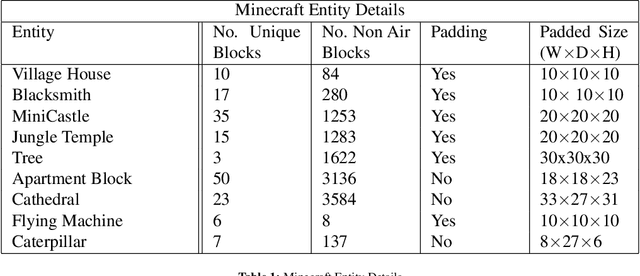

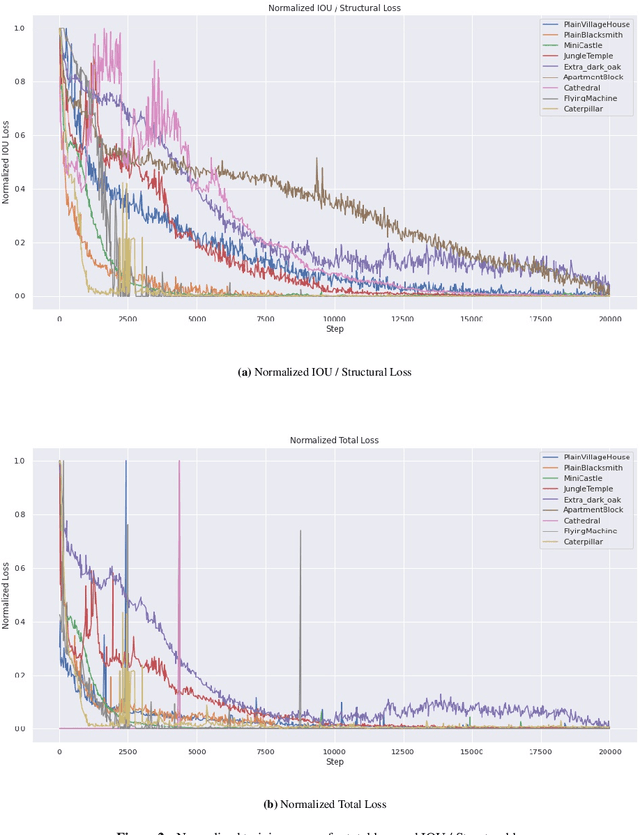
Abstract:Neural Cellular Automata (NCAs) have been proven effective in simulating morphogenetic processes, the continuous construction of complex structures from very few starting cells. Recent developments in NCAs lie in the 2D domain, namely reconstructing target images from a single pixel or infinitely growing 2D textures. In this work, we propose an extension of NCAs to 3D, utilizing 3D convolutions in the proposed neural network architecture. Minecraft is selected as the environment for our automaton since it allows the generation of both static structures and moving machines. We show that despite their simplicity, NCAs are capable of growing complex entities such as castles, apartment blocks, and trees, some of which are composed of over 3,000 blocks. Additionally, when trained for regeneration, the system is able to regrow parts of simple functional machines, significantly expanding the capabilities of simulated morphogenetic systems.
Time to Die: Death Prediction in Dota 2 using Deep Learning
May 21, 2019
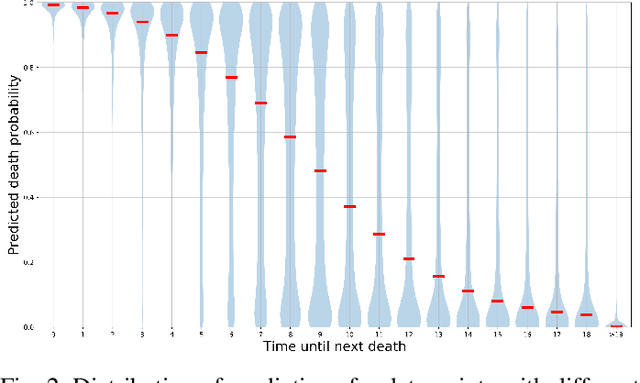
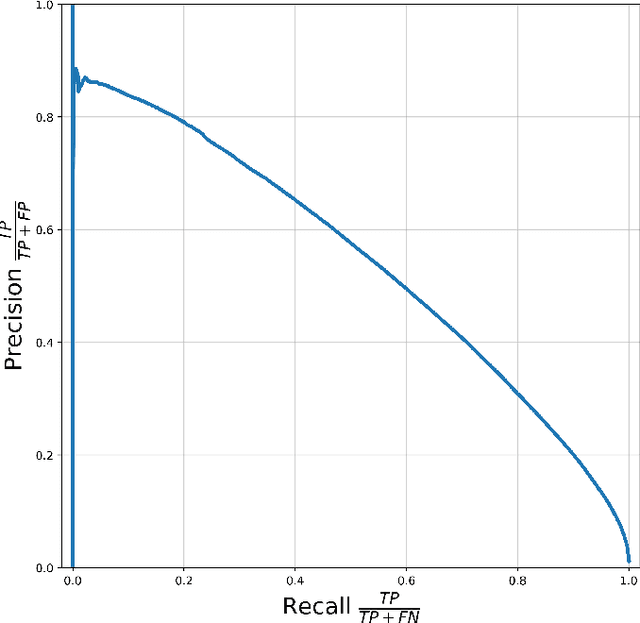
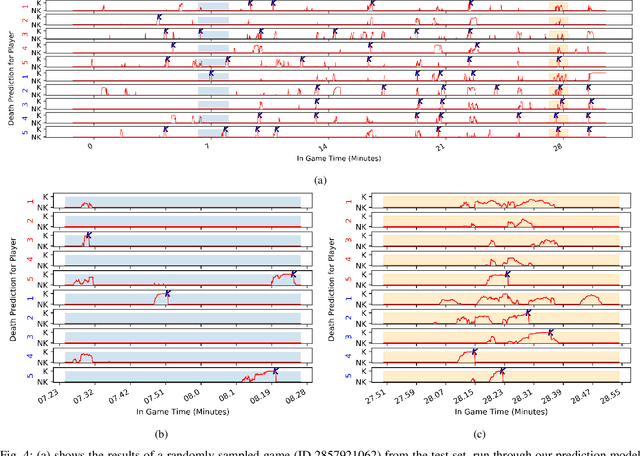
Abstract:Esports have become major international sports with hundreds of millions of spectators. Esports games generate massive amounts of telemetry data. Using these to predict the outcome of esports matches has received considerable attention, but micro-predictions, which seek to predict events inside a match, is as yet unknown territory. Micro-predictions are however of perennial interest across esports commentators and audience, because they provide the ability to observe events that might otherwise be missed: esports games are highly complex with fast-moving action where the balance of a game can change in the span of seconds, and where events can happen in multiple areas of the playing field at the same time. Such events can happen rapidly, and it is easy for commentators and viewers alike to miss an event and only observe the following impact of events. In Dota 2, a player hero being killed by the opposing team is a key event of interest to commentators and audience. We present a deep learning network with shared weights which provides accurate death predictions within a five-second window. The network is trained on a vast selection of Dota 2 gameplay features and professional/semi-professional level match dataset. Even though death events are rare within a game (1\% of the data), the model achieves 0.377 precision with 0.725 recall on test data when prompted to predict which of any of the 10 players of either team will die within 5 seconds. An example of the system applied to a Dota 2 match is presented. This model enables real-time micro-predictions of kills in Dota 2, one of the most played esports titles in the world, giving commentators and viewers time to move their attention to these key events.
 Add to Chrome
Add to Chrome Add to Firefox
Add to Firefox Add to Edge
Add to Edge